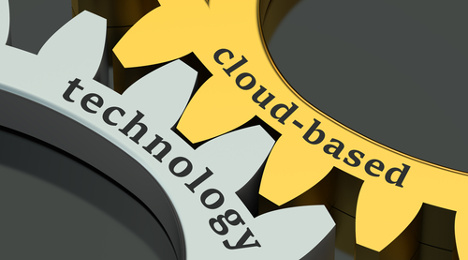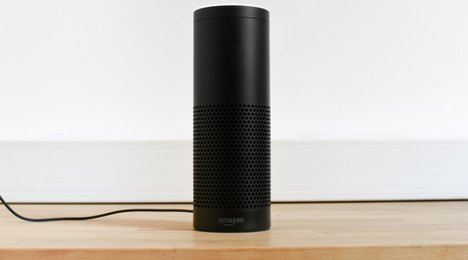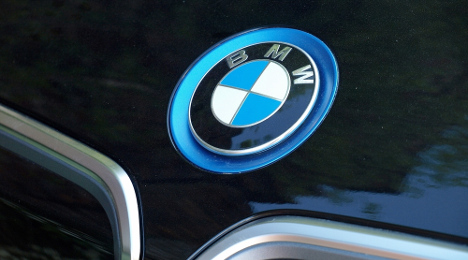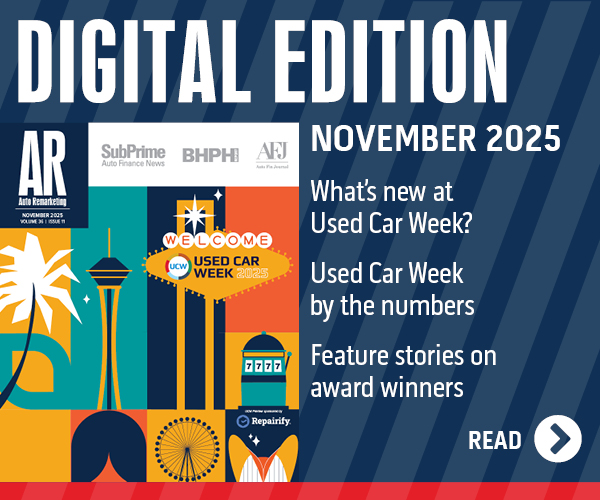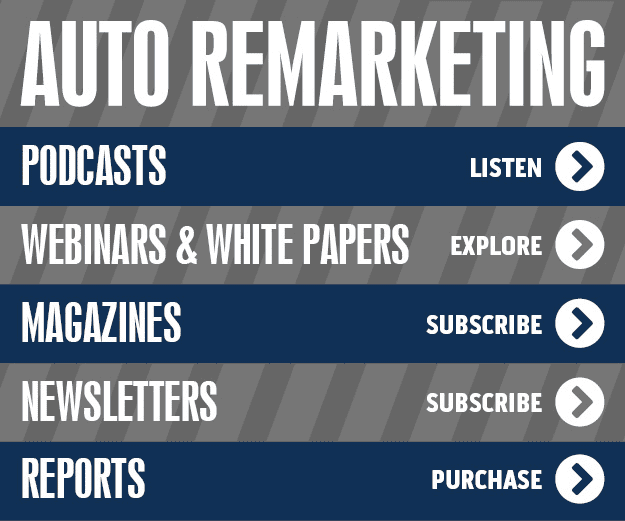When marketing a product, understand your audience. Blend in some social media.
Sounds simple enough, right?
But when you’re dropping $5 million on a 30-second Super Bowl ad — which Experian points out is the going rate this year — that simple strategy becomes a tad more important.
“Because this is one of the most sought-after advertising slots, brands need to make sure they take full advantage of the connection they can make with audiences during the Super Bowl,” Brienna Pinnow, Experian’s director of product marketing for Targeting, said in a news release.
“That means developing a creative strategy that works across channels and encourages people to engage with the brand,” she said.
And using social media to do so.
Experian looked at five auto brands that advertised during Super Bowl 50 last year and also involved a social media campaign with the ad.
What Experian found is that, yes, these brands picked up more social media followers — but these followers happened to be biggier influencers and bigger users than the average Joe who logs onto Facebook, Twitter, etc.
There was a 14.8-percent uptick in the percentage of high-influencer followers (those with 1,000-plus followers) for these brands the month following Super Bowl 50, Experian said.
There was a 17.2-percent increase in the number of consumers talking about the brands that month, and a 35.4-percent gain in the average number of posts for each follower.
“If a brand is going to invest in high-dollar ad space like the Super Bowl, they need to take a multichannel approach. This means extending the TV ad’s story into a social media conversation,” Pinnow said. “Through our data and analytical capabilities, we’re able to help brands identify and connect with audiences who will spread their message to fans, followers and potential new customers. As our analysis shows, when Super Bowl advertisers understand the data and link their strategy across channels, they have the power to motivate action.”
It’s also about understanding the audience you might be reaching, too. And on Super Bowl Sunday, there will obviously be millions of sports fans with their eyes glued to the sets.
Preferences of sports fans
Over at CarHub.com — a company founded by well-known auto industry analyst Jesse Toprak — there is a personality quiz called CarTron for shoppers to figure out what cars best suit them. Some of the questions in the quiz involve sports, the company said.
After analyzing 25,000 quiz answers, CarHub found that sports fan tend to prefer family-friendly cars over “sophisticated” vehicles, and “powerful” rides over eco-friendly ones.
Some examples of these vehicle types, as shared by CarHub:
- Family-friendly vehicles: Honda Odyssey, Toyota Sienna, Toyota Highlander, Subaru Outback and Honda CR-V.
- Sophisticated vehicles: Tesla Model S, Audi A4 and Chrysler 300.
- Powerful vehicles: Dodge Ram, Ford F-150, Dodge Charger.
- Eco-friendly vehicles: Toyota Prius, Tesla, Nissan Leaf and Chevy Volt.
When it comes to storylines, they go for happy endings and stars with whom they can identify, CarHub said. They take non-fiction over fiction and go with their heads instead of their hearts, according to the site.
CarHub also notes that folks who find pro athletes to be role models tend to: go for fun rather than practical vehicles; opt for sophisticated cars over family-friendly rides; choose saving money over eco concerns; want their rides to be powerful and make an impression; prefer cars that are “fun to drive rather than fun to look at,” the analysis said.
“Who we admire says a lot about us, as human beings are inherently social creatures who naturally seek to elevate the 'best' in any group,” Toprak said in a news release.
“The same personality traits that lead us to define excellence in specific ways also lead us to define the ideal vehicle in similarly specific ways, and it is these connections that CarTron takes advantage of in its vehicle recommendation algorithms that leverage seemingly unrelated questions to predict vehicle preferences,” he said.
Demographics of engagement
Going back to Experian’s analysis, the company examined the demographics of social media users engaging with the brands within a month of the Super Bowl, and found that the likelihood of males engaging with these brands was about 30 percent higher than that of the overall population.
Additionally, almost three-fifths of the engagers were between 26 and 50. On an average basis, however, the crowd skewed older: the average engager was about 3 years older than the typical person using social media, Experian said.
Close to two-fifths of the engagers fell into the $50,000-to-$99,999 income bracket.
These folks were also 1.72 times more likely to be what Experian calls “Couples with Clout.”
This is a segment within Experian’s Mosaic lifestyle segmentation system who are often middle-aged couples with teenagers at home.
Experian describes this “Couples with Clout” segment as having an “active and energetic lifestyle,” living in affluent areas and finding “joy in consumption.”
The company said most are in-market shoppers (either new or used) and have their eyes on CUVs and import sedans with cutting-edge tech options.
“We live in an era where consumers freely express their opinions and preferences through a variety of channels,” Experian’s Pinnow said. “Social media data offers brand marketers unique insight into the behaviors, beliefs and preferences of both their current and potential brand fans.
“We enable marketers to make sense of and transform the wealth of social media data available to them and turn it into actionable and meaningful insight. This helps marketers optimize and deliver content that is relevant to their audiences, particularly for those brands planning campaigns for this year’s game,” she said.
A separate Experian analysis shows that four of these five auto brands had top 20 brand loyalty scores: Toyota (sixth at 66 percent), Hyundai (No. 11 at 63.2 percent), Audi (No. 15 at 56.9 percent) and Jeep (No. 18 at 55 percent).
“The primary goal of each marketing campaign is to deliver a message that resonates with the audience on a personal level and encourages them to take action,” continued Pinnow. “Marketers who accomplish this can create a better experience for their customers, which hopefully can evolve into a loyal brand relationship.”
Dominion Dealer Solutions announced the inception of an omni-channel digital solution to drive both traffic and revenue for a dealer’s fixed operations on Wednesday.
"As the automotive industry shifts heading into 2017, we recognize the unique opportunities presented to dealers in their Fixed Ops departments,” said Nicole Case, general manager for Dominion Digital Marketing in a news release.
“With this in mind, we have built specific digital marketing components into our existing products to provide complete support for dealership fixed operations campaigns.”
Dominion offers a single point-of-contact for all of their dealers’ fixed operations campaigns.
A fixed operations module on the Dominion Digital Dashboard gives dealers reports on all digital data within a single dashboard.
Along with reporting, each digital solution delivers consistent branding and messaging dealers wish for to build and manage a trusted brand as well as make vital business decisions.
“Dealers now enjoy consistency in fixed operations data content, messaging and reporting across Dominion’s email marketing, direct mail marketing, search, social advertising, and reputation management solutions,” the company said in a news release.
Through omni-channel digital solutions, dealers can build deeper customer loyalty, expect reduced costs, obtain higher traffic and drive Ros and revenue per RO, according to the online marketing and software services company.
“Dominion’s omni-channel digital solutions are independent of PMA restrictions and fill in the gaps left by OEM marketing campaigns,” said Dominion.
automotiveMastermind, a company that implements cloud-based technology, announced on Thursday that Toyota is the ninth brand to join its platform as a partner.
Toyota dealerships throughout the country will now have access to the company’s predictive analytics and marketing automation software that provides sales teams with key insights and valuable information on its top prospects.
“This opens up a new opportunity for us to communicate with millions of existing Toyota customers to improve sales and retention for their brand,” said automotiveMastermind vice president of sales and marketing Andrew Gillman in a press release. “Our behavior prediction technology shows dealers what customers they should be contacting and marketing to in order to increase sales in the fastest, most efficient way.
“We have seen our dealer partners experience significant increases in sales as well as growth in customer retention immediately upon implementing our technology.”
automotiveMastermind analyses DMS data along with more than 1,000 data points from external sources to generate information that is delivered directly to sales team’s desktops.
The company is also currently working with Acura, Audi, BMW, Cadillac, Honda, Lexus, Mercedes-Benz and MINI.
“Toyota is always on the cutting edge of technology and innovation; designing and building vehicles that consistently exceed expectations. The reveal of the redesigned subcompact crossover SUV, the CH-R, is one example; with Toyota’s focus on a growing and competitive vehicle class, our technology can help dealers identify the rapidly changing consumer behavior toward crossover SUVs,” said automotiveMastermind co-chief executive officer and founder Marco Schnabl.
“We have experienced tremendous success with Toyota’s sister brand, Lexus, just one month after a successful pilot program, we secured about 20 percent of all Lexus dealerships. We are looking forward to providing the Toyota sales teams with relevant insights about their customers, helping transform their existing sales process and ultimately closing more sales.”
A shopper walks into a dealership and begins talking with a salesperson.
The dealership employee asks how the shopper heard of the store, and he or she jots down some notes.
Though that may help break the ice with the shopper, it’s not exactly a scientific approach to figuring out where their traffic comes from.
“That may be part of a good salesperson’s introduction when they enter the showroom or are on the lot, but after they have all those sales, within their DMS, they’re still scratching their head at the challenge of, ‘where do I point my monthly marketing spend?’” Cox Automotive Media Solutions Group president Brian Geitner said in a December phone interview. “And then we’re able to come back around with this study and make it concrete.”
The study Geitner refers to is one recently conducted by independent data analytics firm Transparency.
It found that 60 percent of an average dealer’s sales have been influenced directly Autotrader or Kelley Blue Book.
In conjunction with this study, the two Cox Automotive entities are inviting dealers to test Transparency’s results against their own respective data sets.
In other words, a dealer can have his or her buyer database analyzed to see how many of their sales were influenced by KBB or Autotrader.
The study is available now through the NADA Convention & Expo, a Cox Automotive spokesperson confirmed, and its availability will possibly be extended until the end of the quarter.
There are eligibility requirements: dealers have to be current customers of Autotrader and KBB with inventory listed as of Sept. 1.
“Transparency’s attribution data finally makes it possible for dealers to know how many people who transacted at their dealership (car purchase or service) visited Autotrader or KBB.com and how much they earned from those customers,” Geitner said in a statement. “We’re invested in giving our clients confidence that they’re spending their marketing dollars wisely.”
Transparency starts its analysis with first-party sales data and doesn’t use cookies or tracking pixels; it reportedly has above 80 percent accuracy for sales matching findings.
The company pairs IP addresses of consumers with the transactional DMS data at a dealership, according to the statement. It then cross-references that with matching IP addresses on the Autotrader and KBB websites.
It also complies with relevant privacy laws.
Furthermore, Cox Automotive does not receive any of the DMS data, Geitner said.
“Today’s consumer likes to shop anonymously,” Transparency chief operating officer Darren Haygood said in the statement. “While millions of customers visit aggregate publisher sites every month, very few actually submit a lead prior to purchasing the vehicle. Transparency provides our partners and their dealer clients insights into the value of the entire audience.”
Giving dealers information on where their sales are coming from helps “create that confidence and connect those dots for the dealer,” Geitner said in the interview.
“They’re creating great relationships on their own and we want to show them that we’ve had some influence on that,” he said.
All too often, marketers count on passive digital marketing strategy when they could be taking a more proactive approach that is more efficient, says Eric Brown, president of LotLinx Media Holdings.
“The Internet itself is evolving, that’s opening new doors for marketing execution for the local dealer and allowing for a more proactive strategy versus a more passive strategy where dealers can highly target the best prospects in the market, as well as their databases,” said Brown.
Brown said dealers need leave their showrooms and “start knocking on the doors around the neighborhood in a digital sense.”
“With or without sales decline you’re seeing already sort of the evolution of the internet being reflected in digital strategy available to automotive dealers,” he said. “The Internet of Things is tying together the data in a way that allows auto dealers to take a more proactive approach to their ad budget as opposed to a passive approach.”
A lot of media, particularly traditional media in addition to some traditional internet media, such as automotive portals are passive in their approach, according to Brown.
“They do a lot of marketing through their general audience and hope that audience will show up in their virtual showrooms,” he said.
Additionally, Brown points out that with the internet of things, there is an abundance of data to understand who is precisely in the market and what they are showing greatest consideration for in terms of vehicle purchase — allowing dealers to target shoppers with much more specificity and greater cost efficiency.
“The Internet of Things is changing the landscape for a dealer in terms of the capabilities that are available to them,” said Brown. “The efficiency and cost effectiveness of those techniques are dramatically greater than the more passive traditional media.”
Brown predicts that the market will soften in 2017, but it’s not going to be substantial.
“The trend line is pretty consistent and we still have a fleet that’s more than 10 years in age so there may be some softening as you see a climb in interest rates,” he said. “I don’t think it’s going to be dramatic, certainly nothing like we lived through in 2008, 2009, 2010. We are pretty much where we were in 2006.”
Brown also spoke of the impact of the new Trump Administration.
“What the new administration does from an import/export scenario can have some influence,” he said.
Additionally, he acknowledges that there’s potential the new administration might have a positive impact as well, depending on what they do from an infrastructure investment standpoint.
Beyond a slew of uncertainties at play, another reason analysts are “hedging our bets” when forecasting the 2017 new-car market and opting instead for a range: off-lease volume, says Autotrader senior analyst Michelle Krebs.
According to forecasts from Cox Automotive chief economist Tom Webb, off-lease volume could reach 3.6 million units in 2017 and then approach 4 million next year.
“There is going to be a tremendous amount of off-lease vehicles coming back into the market,” Krebs said in a conference call with the media on Wednesday. “And the interplay between those what we call nearly new cars, certified pre-owned cars against new cars is going to be something to watch.
“It’s great for consumers. Except they will have to do a little more homework in looking at, ‘do I buy a nearly new or do I buy new?’ But how that plays out is something that we’re going to pay a lot of attention to this year,” she said.
Leading the "unknowns" potentially impacting the new-car market, Krebs said, are the policies the new presidential administration could implement. Things like border taxes, an infrastructure package, changes to the tax structure and regulatory movements all could impact car sales, she said.
Managing rental fleet
The overall impact of off-lease volume certainly has colored how automakers have managed leasing programs in recent years. The same could be said for sales into rental fleets.
Kelley Blue Book senior analyst Alec Gutierrez said during the call that automakers have become “quite a bit smarter” when it comes to the strategy around selling new cars into rental.
“They’ve cut volume in a number of ways to manage the amount of units they’re going to have coming back to auction in the next 12 to 18 months, similar to the way they’re having to deploy their lease strategy,” he said. “And two, they’ve also been, I think, a lot smarter in terms of making sure that the units sold into rental are more representative of the average car sold to a retail consumer so that when those come back, you don’t have a bunch of cars with crank windows and with no options dragging down your residuals, which are going to make it more costly to lease in the future.”
On Thursday, PureCars announced that it is a Bing Ads Select Partner, and now joins a number of other small and medium-sized business partners in the advertising industry that have demonstrated expertise in driving growth using the Bing Ads platform.
“We are honored that Bing recognizes us as a valuable partner for their automotive clients,” said Jeremy Anspach, chief executive officer of PureCars. “With the majority of car shoppers going online to research before even setting foot in a dealership, giving our dealers an all-encompassing digital marketing strategy is crucial. It’s our goal to help dealers take the guesswork out of search architecture and digital advertising, and working with Bing now rounds out our strategy even further.”
PureCars said the new partnership illustrates the effectiveness of the company’s data-driven engine to help dealer clients maximize their bottom line. Additionally, Bing’s advanced targeting by demographic capabilities allows PureCars to supply dealerships increased search engine marketing offerings.
“At Bing, we pride ourselves on selecting ad partners that already stress relevancy and have an in-depth understanding of search, and PureCars does just that,” said Jody Doran, director of partner development for Bing Ads at Microsoft. “As a Bing Ads Select Partner, PureCars’ dealers can now even more efficiently serve to consumers tailored advertisements.and meet their end goals of reaching car shoppers in all the right places.”
Bing’s three-tiered program that provides support, service and solutions, to partners places them into three categories: Partner, Select, or Elite.
PureCars has been a Google SMB Premier Partner since December of 2014.
When Dev Bhatia goes to pick up his children, there’s no need to lay on the horn or text back-and-forth.
Dad pulls the car into the driveway and the kids automatically receive a notification on their phone.
This happens through the use of connected-car technology from CalAmp, where Bhatia is senior director of product management.
What once sounded futuristic is now becoming more common in the used-car market, particularly as connectivity and cloud technology advances.
For example, a partnership announced in September between Cox Automotive and cloud platform Vinli gives dealers the ability to take used cars without connectivity and make them smart cars.
Dealers can use this technology to monitor cars on their lots, sell used vehicles with aftermarket connected car capabilities and communicate with customers on retention programs. Their Connected Dealership Program includes three key customizable functions: lot management, retail connectivity as an aftermarket product and service retention.
And with increasingly more new cars coming equipped with connective features, the thinking is, eventually the entire used-car market could be comprised of vehicles with built-in connectivity, says Scott Frank, vice president of marketing at Airbiquity.
“Until then, there will be a mix of unconnected and connected vehicles in the used-car channel, and we’ll see numerous firms attempting to ‘upgrade’ the unconnected vehicles with aftermarket devices like OBD-II ‘dongles,’ dashboard cameras, recorders integrated into smartphones, and other types of services delivered from the cloud,” Frank said in an emailed Q&A.
“How successful these business ventures will be in terms of profitability is still unclear — but what is clear is many companies do believe there’s business and consumer value creation for taking a shot at the opportunity,” said Frank, whose company is a provider of vehicle tracking systems, telematics, OTA updates and connected car systems.
Dealers in the used-car space are at the forefront of this business opportunity to turn non-connected used cars into connected cars.
That opportunity is particular bright for franchised dealers, Frank said.
“Auto dealers directly associated with automakers will have a distinct advantage when it comes to making aftermarket connectivity work because they are intimately aware of the vehicle products, platforms, and systems; can efficiently integrate new technology into the vehicle as an extension of current service capabilities; and have existing relationships with the vehicle owner who will decide and pay for any incremental technology and services that go into their cars,” he said.
“Additionally, auto dealer connectivity upgrades could be warranted by the automakers in some cases, and economies of scale introduced by leveraging automaker procurement and supply chain relationships,” Frank said.
Going back to CalAmp, the Southern California-based aftermarket GPS manufacturer, acquired LoJack, a stolen vehicle recovery system, earlier this year.
In September, it revealed LotSmart by LoJack — a telematics service for dealerships — and SureDrive by LoJack, a connected car mobile application for consumers.
On the buy-here, pay-here slice of the consumer side is SkySmart, which lets BHPH dealers sell connected car technology to its customers, and is “built on top of telematics devices that are sold for vehicle finance,” Bhatia said.
“Part of what we saw as opportunity is both at the dealerships, at the large dealerships whether they’re new or used, at the auction lots, there is an inventory control and management problem. We see that and we know that telematics and GPS can help address some of the real basic challenges. It’s actually a real simple problem for telematics to play a role,” Bhatia said. “But then more importantly, how do you also take telematics into the consumer space? And that’s what SkySmart is. So these are products that kind of are interlinked. And one helps the other.
“In our minds, we didn’t see it as a point solution. We saw it as, how can telematics provide benefits across the vehicle lifecycle, from auction to lot to the consumer?” he said. “And even past the initial purchase, how can you continue to provide value. That was our grand vision.”
When asked about the differences between how the industry might use connected car technology versus how consumers might use it, Bhatia said: “I think there are a lot of benefits that do overlap. ‘Find my car,’ is an example. Where it’s the same platform, same device installed in the car that can serve both clients with the exact same function. But each has got subtle differences … the buy-here, pay-here market, that dealer is driven by revenues. And one of the challenges of his business is risk.
“And so he sees the GPS device as way to mitigate risk. And it obviously has great benefits in enabling him to do that. We see it as an opportunity to, once you’ve addressed the risk factors, how can you make more money?” Bhatia said. “You’re the dealer, you’re goal is to mitigate risk and make more profit. And one way to do that now is to take that same GPS device that you purchased to mitigate risk and now make some more money of off that. And the way you do that is by selling connected car benefits to the consumer."
“Given where we are in the market, I think most consumers now, they’ve seen ads for some of the larger brands out there that have connected car benefit,” he said. “So they get it. They know what a connected car is. And part of their problem is, how does an aftermarket vehicle that is maybe not a brand new vehicle coming off the factory floor, how can it become a connected car? And there’s a way. And then we provide that with SkySmart.”
Artificial intelligent devices like Amazon’s virtual assistant smart speaker, Echo, makes it easier for consumers to purchase items from its online store, paving the way for future online vehicle shopping and research using virtual personal assistants.
Information that is spoken to software on a device that processes the natural and conversational voice of users are likely to be more detailed than ones typed on a screen.
The speech recognition capabilities of Alexa, the artificial intelligence brain of Amazon Echo and similar products like the recently released Google Home designed to detect and recognize voices allow users to speak as if talking to another person.
“About one in five consumers are likely to use a mobile or wearable device to research and buy vehicles online and from our perspective, this means that car shoppers will be comfortable making purchases on a device like Amazon Echo,” said PureCars chief executive officer, Jeremy Anspach.
Similar to how people speak to wearable devices like a personal assistant, Anspach expects that will happen with Amazon Echo as well.
Searches such as “used BMW for sale” or “used BMW 328 for sale” typed into a search engine are common, but more detailed queries spoken to a voice controlled device could sound like “I’m looking for a used BMW 328 with Bluetooth navigation and preferably silver for sale for under $30,000 find it,” according to Anspach.
Dealer’s digital advertising providers having the right tools in hand is vital to leveraging any imminent detailed searches.
“As Echo and other devices like it expand, there’s going to be more decisions that need to be made related to where to buy media,” said Anspach. “That’s not a shift that the dealer is going to need to think too much about, it’s the confidence level they have in their provider to know that the ad budget is spent appropriately.”
Anspach went on to say, “The dealer today is already investing in traditional and digital media, where the dealer needs to make a wise decision is whether his provider is one who can understand which vehicles on the lot need to be marketed and on what media.”
Echo uses Amazon Web Services to recognize and respond to requests processed in the cloud.
Amazon continues to gain third party support for the Echo; there are currently more than 3,000 apps for the device.
Alexa has the potential to be integrated with a number of other appliances and products including cars.
BMW is leveraging a pair of advertising providers that specialize in spots using the latest television technology for its latest campaign to get potential buyers from in front of their high-end TV and to the showroom.
BrightLine, a provider for advanced TV and OTT advertising, has partnered with UM, a division of IPG Mediabrands, to launch BMW’s latest ad innovation. By using BrightLine’s new in-stream immersive ad unit for BMW’s connected TV commercials, viewers can customize a BMW X1 in-spot and begin their showroom experience without getting off the couch.
By combining BrightLine’s video and content enhancement system, the companies explained the commercial combines full-screen HD video with an interactive element that can allow the viewer to use their remote control to change the color of the vehicle, or rotate it to see different angles, all within the 30-second spot.
UM, working in partnership with the IPG Mediabrands’ Cadreon Advanced TV team, led the investment strategy to support the campaign on leading premium content publishers with inventory across connected TVs.
In addition to the enhanced viewer experience, BrightLine’s InCast platform is geared to provide a deeper layer of measurability and campaign reporting metrics for the media seller, the client and the agency, allowing for “true one-to-one” measurement, reporting and real-time creative optimization.
“Experiencing the ultimate BMW driving experience can now start with the TV commercial,” said Tim Hill, executive vice president and managing partner of investment at UM. “By combining the right media buy with Brightline’s technology, viewers can instantly customize their BMW X1, starting the brand engagement before entering the showroom.
“Through this partnership, we can also accelerate the ROI and effectiveness of TV, taking advantage of its evolution to more dynamic and immersive streaming environments in the OTT space,” Hill continued.
BrightLine’s InCAST product suite can give clients plug-and-play access to some of the most cutting edge ad solutions in television, enabling personalized household (HH) addressable creative, an array of interactive ad products, and next-level analytics that reinforce the value, viewability, and high return on investment (ROI) for TV advertising.
“UM and their clients continue to push the envelope and challenge us to innovate,” said Robert Aksman of BrightLine. “BMW’s desire to reach their target audience in a meaningful and impactful way with was the perfect fit for our new ad product, designed and developed specifically for the living room viewing environment.”



